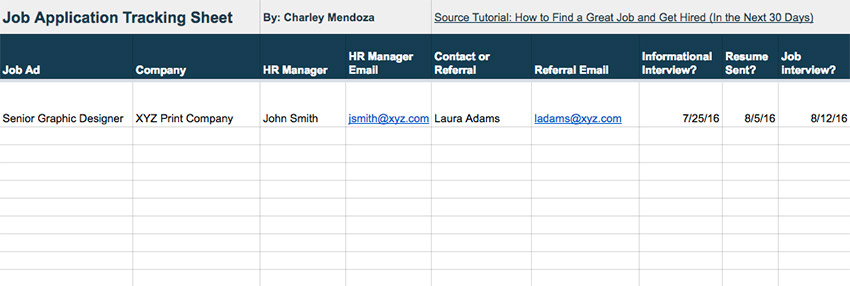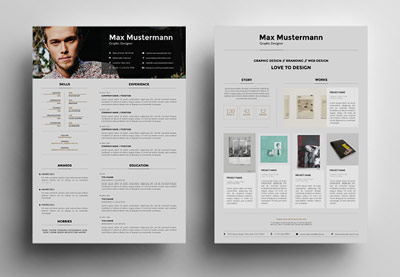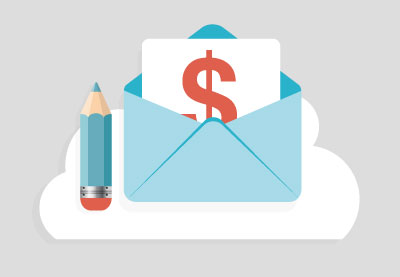Out of work? Have important bills due but not sure if
your savings is enough? Or maybe you’re frustrated with your job search and feeling overwhelmed?
If these job search issues sound familiar, here is a comprehensive resource to help. In this step by step guide, I’ll show you how to find a job and how to get hired in one month or less.
Whether you’re a fresh graduate or a professional in your
field, this road map can help you search for a job with minimal frustrations,
distractions, or delays.

Day 1: Find the Right Jobs and Companies
Let’s look at how to find a job efficiently. Unlike many candidates, you’re not going to dive in and
start sending resumes to all job ads you see.
You’re going to identify what you want and what you’re good
at first. This process narrows the field and minimizes the shiny-object
syndrome applicants experience.
Ask yourself the following questions:
- Do I want to work with a startup or an established
company? - Do I want to work at home, or in an office desk?
- Do I want to work in the same industry?
- What kind of boss do I want to work for?
- What am I good at?
- What skills or achievements did previous managers praise
me for? - Will these jobs pay me enough salary to cover my needs?
(Be realistic.) - Am I aiming for a better salary, career growth, or
autonomy? Which of these am I willing to sacrifice? (Sometimes, you can’t have
them all.)
Your answers here will be your guide in deciding which
positions to pursue.
Day 2 to 3: Identify and Nurture Several Opportunities
Don’t put all your eggs into one basket. You’re still not
going to send any resumes at this point.
Right now, your task is to look for vacancies and companies
that fit your criteria. Scour job boards, LinkedIn, your network, college
alumni, and friends for opportunities.
Then research the job description, company, and team. Would
you be happy with that kind of work? Look for 15-20 companies or job ads that
match your dream job checklist.
Keep a meticulous record of everything you find about companies
that meet your criteria. You’ll need it in your application later.
Not sure where to look for dream job opportunities? Start
with:
- Search Google for: “Top
Companies for (your target position)” or “Best Employers in (industry).” List companies that have vacancies
that match your skills and those that fit your employer wish list. - Check the local chamber of commerce and angel list
association. These are good places to look for small and medium businesses,
including startups. - Browse LinkedIn groups in your industry. These groups have
job boards and some members post job ads in your market.
Your
final list should have at least 15 companies or job ads. It will get smaller as
you complete this process. Sometimes, the job is already taken, or their
corporate culture doesn’t fit you at all. Don’t be afraid of casting a wide
net, so you don’t run out of options later.
Day 3-5 Create Your Job Application Strategy
This strategy is the core of this 30-day process. Without
it, it’s easy to get distracted or disappointed, depending on how your search
is going. Treat this as your master to-do list and back-up plan.
Block Time into Your Schedule
Sometimes, finding a job can feel like full-time work in
itself. You can’t just send applications whenever the mood hits you.
Consider your schedule then allot a realistic block of time. You’ll need at least one hour a day. But you can do
two or three hour blocks if you have time. Don’t forget to add a few hours of
break, or one whole rest day from the job search to keep you from getting burned
out.
Put Your Checklist to Work
Your checklist varies, depending on seniority level and
industry. For instance, applicants for managerial positions need more time to
create a functional
resume showing off their achievements. Fresh
graduates might be better off networking
or practicing interview skills.
Here are some items
to add on your list:
- research jobs and companies
- improve your resume
- improve your portfolio
(optional) - check your online image
- research people from your
network - call or meet people
- go on informational interviews
- prepare for job interviews
- do phone or in-person interviews
- work on negotiating in interviews
Plot these items on your calendar and treat them like actual
work. Some days, you’ll feel discouraged (or lazy), push on anyway. Don’t let
your mood dictate your actions—that’s this list’s job.
Learn to Deal With Rejection
Yes, this is included in your job search strategy.
It’s better to learn how to handle rejection now, while
you’re not on the receiving end of it. Preparation minimizes the chances of you
sulking for days.
Allow yourself to feel the pain of rejection. Then have fun
with your friends to take your mind off things. Don’t think of rejection as ‘going back to square one.’ It’s not. You’ve
already written a resume and cover letter. You went on a few interviews, and
built a good foundation for your network. You’re not starting from scratch.
Try to see things from the employer’s point of view. Is
there anything in the interview that could’ve turned them off? Is your resume
bland? Work on improving these points as you continue the job search process.
Day 5 Onwards: Track Your Progress
Clicking one job posting after another doesn’t always yield
practical results. That’s the number one reason it’s important to track
progress—to make sure what you’re doing contributes to your job hunt.
The second reason is to keep you accountable and motivated. Use
the free downloadable spreadsheet in this tutorial to track your progress.

Use this sheet to list the
names and emails of your contacts, job ads and company names, including the
dates when you accomplished certain tasks.
Day 5-8: Build Your Network
The three days allotted for this process is for getting
things started. Building a network takes time and continuous effort, so allot a
few hours for these tasks every week.
You may not know the HR manager of your dream employer, but
a co-worker—or a friend of a friend—might.
Search Your Network for Referrals to Add to Your Target List
1. Start
with your immediate network: friends, family, and co-workers. Do they know
anyone working at one of your target companies? It doesn’t have to be the HR
manager. Someone who works in the same position you’re targeting, or even a
different department is good, too. All you need is a way in.
Not sure who to ask? Check company
Facebook and LinkedIn pages to find out who in your immediate network are
current or former employees. You can even call your school’s alumni office to
inquire.
2. Check
your online extended network. Browse different LinkedIn groups, such as
alumni, company, and industry related groups, for second degree
connections. Is there anyone who works in one of your target companies, that’s
also connected to someone in your immediate network? Note their names, emails,
and job title. Ask your immediate network for an introduction, or send a
personalized request for an informational interview.
3. Check
your offline, extended network. Do the same as above but this time; reach
out to relatives, professional acquaintances, former co-workers and clients, or
people you meet at events.
Don’t be shy about reaching out to contacts, especially
those in your extended network. Many companies offer a referral bonus for
bringing candidates, so it’s a potential win-win for both parties.
Day 9-12: Set Up Informational Interviews
Informational
interviews are great for finding details about a job or company that you
can’t easily get from job ads or any online source. It’s also a good way to
gauge if you’ll like their team and company culture.
Read through our comprehensive tutorial on how to set up and conduct informational interviews:
Also, here’s an Informational Interview Email
Template from Michelle Riklan,
Managing Director at Riklan Resources:
Dear (Mr/Ms ________),
I found your name and email on
(where you found it). I am
a(fresh graduate/your job title), and hope to pursue a career in(target job)
at(target company).Since you’re a
(similar job title)with (X years of, I would appreciate the opportunity to ask a few questions about your
experience)
career path and the work you do at(target company).I know your time is valuable, so I’m willing to work
with your schedule. We can talk on the phone, or I can meet you anywhere near
your office.Kindly let me know if you can spare me 15-20 minutes of
your time, and your preferred communication method.Thank you in advance for your time.
The
quality of information you get on this interview depends on the questions you
ask. Do the research and prepare for it in advance. Asking obvious questions
that can be answered with a quick Google search is a waste of time. You’ll also
disappoint your lead, and lose a potential referral.
Riklan suggests starting with the following questions then
asking follow-ups as necessary:
- What skills and experience are required for your job?
- Please describe your typical work day.
- What are the biggest challenges you deal with at work?
- What do you think is the best part of your job?
- Does your work require frequent overtime, or is your schedule flexible?
- How do professionals in your industry find work? Is there a publication, special group, or job board you go to?
- How long is the average employee tenure?
- What’s the career path like in your organization?
- How does your employer differ from your competitors?
- May I use your name as a referral? (Only ask this if the interview went well.)
- Who should I contact in your company to inquire about similar positions?
Day 13-15: Create a Tailored Resume
Remember, your resume’s only job is to get you an interview.
A great resume will never suffice to show off your entire skill set
and work history. Tara Rist, HR
Manager of Policy Expert agrees:
Avoid telling
your life story in your resume, keep it factual and to the point. I don’t want
to have to trawl through a novel to establish whether you’re right for the
job!
Write a concise
resume that tells a good narrative about the benefits of hiring you.
Emphasize your benefits and achievements, include a personal brand statement, and don’t sweat the details about your day
to day responsibilities.
We’ve already covered resumes in great detail at Envato Tuts+, so
check out these tutorials for more details on making a great resume:
 ResumesHow to Make a ResumeLaura Spencer
ResumesHow to Make a ResumeLaura Spencer Resumes9 Creative Resume Design Tips (With Template Examples)Grace Fussell
Resumes9 Creative Resume Design Tips (With Template Examples)Grace Fussell Resumes25 Creative Resume Templates: To Land a New Job in StyleSean Hodge
Resumes25 Creative Resume Templates: To Land a New Job in StyleSean Hodge
Before You Send Your Resume
- Send it to a real person, not an “[email protected]” or “[email protected]” email. Look
up the HR manager’s email online, or ask your inside source during an
informational interview. - Recruiters check applicants’ online footprint. Hide racy and questionable photos, comments, or status
updates from your social media accounts. Optimize your
LinkedIn profile by adding keywords, recommendations, and a professional
looking picture. - Go over your resume to make sure
it’s not going to turn off recruiters with these mistakes. - Make sure your resume design is professional and use a modern resume template if needed.
- Include a personalized note or
email cover
letter highlighting your skills and interest for the job. If you have a
referral, mention that too. The cover letter is the hook that
determines whether your resume is read or trashed. So don’t write a generic and
gushy letter that reads like a dry list of facts.
Chris
Butler, CEO & Founder of Hashtag CV says,
“A cover letter becomes boring when it doesn’t contain
the key ingredient, personality. If I’ve advertised a job, that means I’m
looking for a person, not a robot.I would expect a candidate to have done their research
on my company and mirrored our ethos within their cover letter. I get a little
bored of seeing “I’m an honest and trustworthy individual who can work well
within a team or off my own initiative”. For me, the more unique the cover
letter, the more intrigued I am to learn more about that candidate.”
Send your resume and cover letter to all the companies in
your target list. If you have spare time in the coming days, look for more jobs
that fit your dream job description, then send them an application, too.
Keep in mind; you’re not going to blast your applications to
every company with a vacancy in your target position. Find out if you’ll like
the company and do an informational interview first, if possible.
Day 16- 24: Prepare for Interviews
How to get hired for a job you want requires handling interviews well. Interviews make a lot of applicants nervous. Erase your
fears through practice and preparation.
Many interview questions are designed to gauge your ability
to do the job, and blend in with the existing team. Use your research from
earlier and the insights you gleaned from the informational interview to tailor
your answers per company.
And remember, it’s okay to ask questions towards the end of
the interview. It shows you’re proactive and passionate about the job.
Some Questions to Ask
- What’s the next step after this
interview? - Would you mind telling me the
reason for this vacancy? (This is a good way to gauge potential problems in the team,
especially if the previous employee resigned.) - What’s the number one challenge in
this role? - What would need to happen in 30
days, for you to consider the next hire a success? - Is there any reason you wouldn’t
hire me? (Good way to proactively answer their hesitations about you.)
For a primer on interviews, including behavioral, technical,
and unusual questions asked, check out:
Day 24-26: Ace Your Follow-ups and Thank You Notes
How to get hired above other candidates requires a bit of strategic application. Following up is simple to do, but improves your odds of getting the job.
A good thank you note reminds the interviewer of your
achievements and pushes your application to the top of their mind—increasing
your chance of getting a job offer. Send a thank you note 24 to 48 hours after your interview.
Not sure how to write one? Here’s a complete guide with various stra templates to follow:
If you didn’t receive feedback about your application within
a week, send a short follow-up email to indicate your interest for the job.
Day 26-30: Negotiate the Job Offer
You got the job offer. Great!
Don’t let that euphoria drive you to sign the offer without
considering its full implications. Even if the employer says the hiring is
urgent, it’s okay to take a few days before making a decision.
This is the moment of truth. All the hard work you went
through is null, if you don’t get a good compensation package and work
environment.
Questions to Consider
Find out if you’ll be happy with the job by answering these
questions:
- Is there room for growth in your position? What
about in other departments? You should have enough room to grow, otherwise
you’ll easily get bored in a year or two. - Do they offer employee advancement training?
- What is your future boss’s management style? Can
you thrive under that kind of leadership?
Some Items to Negotiate
- Is the pay at par industry and location wise?
- Does the number of vacation credits suffice for
your personal and family needs? - Do they offer incentives or bonuses? If not, is
there a possibility to negotiate a performance-based incentive? - What other non-monetary perks are included?
Once you determine the pros and cons of your job offer,
schedule a discussion with the HR manager or whoever extended you the job
offer. If you received multiple job offers, use it as leverage. Prepare
rebuttals and evidence to back-up every item you’re going to negotiate. Here’s
how:
If you’re shy, you can negotiate your salary and other perks
via email:
Speed Depends on You
How fast you get hired depends on the effort you’re willing to
put in. Learning how to find a great job and get hired in 30 days isn’t hard. The process is
simple, if you just stick to it.
Don’t consider this timeline absolute. Your search might be
quicker or longer, depending on your dream job checklist. Also, the higher up you go
in the corporate ladder, the harder it is to get a suitable offer.
Try this 30-day process, discover just how much progress you can make in a month, and keep at it until you land that great job you’re aiming for.
{excerpt}
Read More




